Health benefits of oats are well known. Eating a bowl of oatmeal each morning is the second perfect way to start your day off right.
I say second, because, I believe a green smoothie is the first! Of course, you can combine a green smoothie with oats, such as this lime-oats-greens smoothie, for a total winner in the breakfast department.
This inexpensive grain can be a great ally in weight loss and disease prevention. It’s very versatile and can be used in cereals, cakes, oatmeal cookies, pancakes, etc. It helps fill you up, without loading you with too much fat and calories. So, let’s look at some health benefits of this simple food.
Health Benefits of Oatmeal
1. Oats are ideal for weight-loss: low in calories, full of fiber, help stop cravings.
As long as you don’t add too much fat and sugar, it is an ideal low-calorie breakfast or snack (raw nuts and seeds, and some fresh or dried fruits is fine, but it will increase the caloric content). It also stays in your stomach longer than most other breakfast foods, so you don’t feel hungry longer. This helps prevent cravings. If you struggle with feelings of hunger when dieting, a breakfast of oatmeal (or oatmeal smoothie) may be just the ticket, since it is more likely to keep you full until lunchtime than many other breakfast foods.
2. Contains high levels of fiber, low levels of fat, and high levels of protein.
Oats are a good source of many nutrients including vitamin E, zinc, selenium, copper, iron, manganese and magnesium. Oats are also a good source of protein. In fact, it’s on the short list for the highest protein levels of any grain.
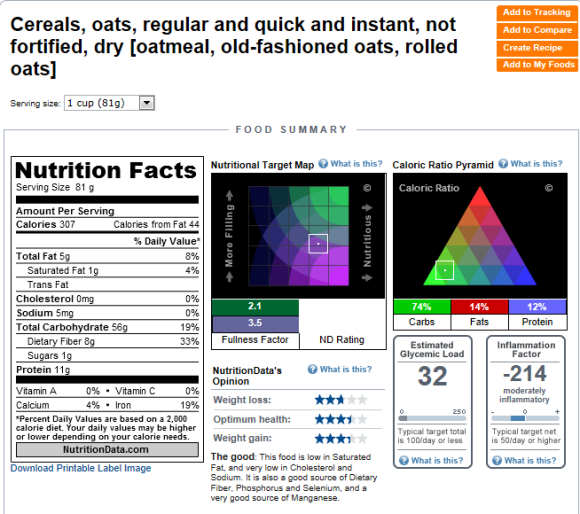
Oatmeal Nutrition Facts – source: nutritiondata.self.com
3. Helps stabilize blood sugar, thus lowering risk of diabetes (type 2)
Soluble fiber slows down the digestion of starch. This may be beneficial to diabetics because, when you slow down the digestion of starch, you avoid the sharp rises in your blood sugar level that usually occur following a meal. The high fiber and complex carbohydrates slow down the conversion of this whole food to simple sugars. The high levels of magnesium nourish the body’s proper use of glucose and insulin secretion.
4. Lowers bad cholesterol levels (without affecting your good cholesterol).
Oatmeal contains soluble fiber, called beta-glucan, which attaches to cholesterol-containing bile acids as it moves through the body, causing your body to absorb less cholesterol.
5. Non allergenic, mostly gluten-free.
More and more people are discovering that they are sensitive to gluten. If you are gluten intolerant or have celiac disease you may be still able to eat oats. Oats lack many of the proteins found in wheat (gluten). Oats can also contain gluten from nearby wheat field contamination and processing facilities. Many studies have shown that many celiacs can consume wheat free oats with no problems.
6. Helps protect against heart disease and cancer.
Studies have shown that oatmeal, like many whole grains, contains plant lignans, which are converted by intestinal flora into mammalian lignans. One lignan, called enterolactone, is thought to protect against breast and other hormone-dependent cancers as well as heart disease.
7. Beneficial for heart disease; protects against heart failure.
A Harvard study on 21,000 participants over 19 years showed that found that men who enjoyed a daily morning bowl of whole grain (unrefined) cereal had a 29 percent lower risk of heart failure.
8. It’s easy to prepare and tastes delicious!
Whether instant, cooked on the stove or baked in the oven, the combination of flavors you can fit into a serving of oatmeal is limited only by the imagination. All oats whether in flakes or groats have rich nutty flavor. They are delicious when eaten with dried fruit, nuts and seeds.
9. It’s inexpensive and you probably already have oats in your kitchen
It’s estimated that eighty percent of U.S. households currently have oats in their cupboards.
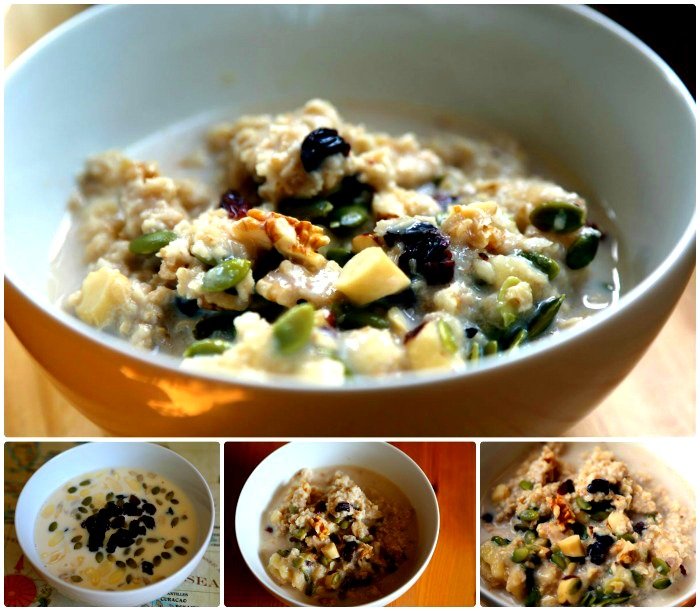
Benefits of Oatmeal are numerous. There is no reason not to have them for breakfast or in your smoothie.
All these health benefits are actually for oats. However, most people don’t think about oats – they think about oatmeal. In fact most people would probably not be able to identify oats, even if they were right in front of them.
There are many different levels of processing of oatmeal. Generally the larger the “flake” – as in rolled oats or the bigger the seed or groat – as in steel cut oats – the less processed it will be, the more nutrients it retains and the slower it will be to digest. It will also be slower to cook though.
I like to use the quick-one-minute rolled oats for a quick, no-cooking-required healthy breakfast. I soak them in almond or soy milk, and toss in some dried fruit, nuts and seeds for even more nutritional benefits.
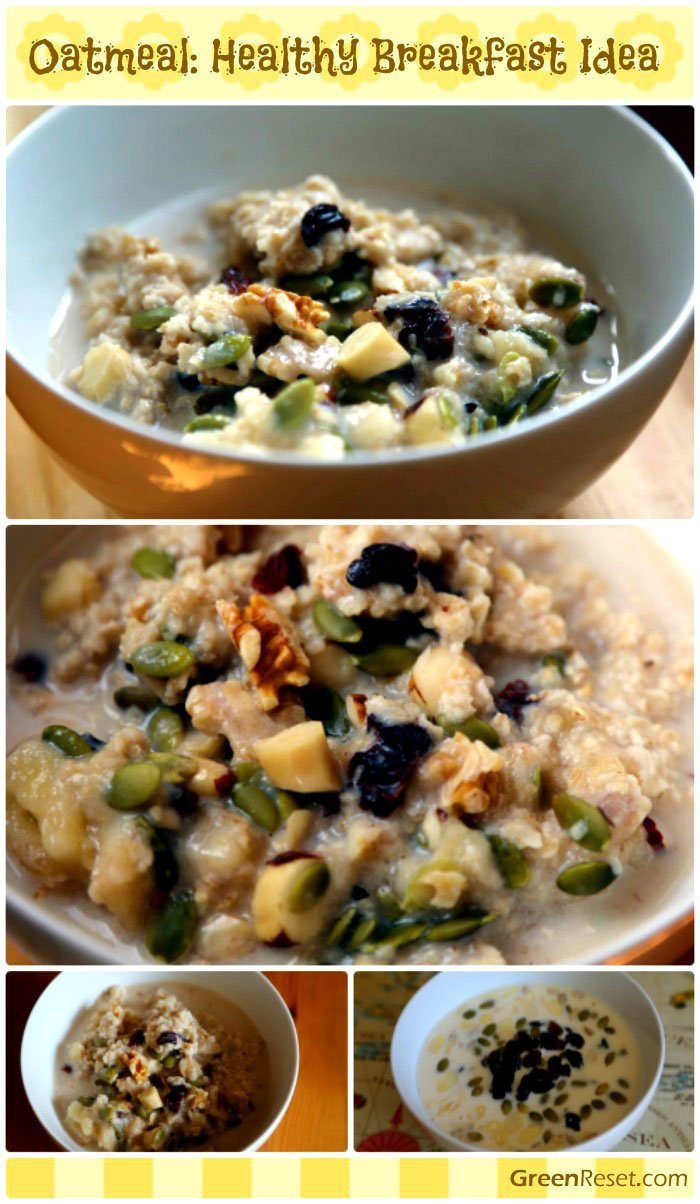
Questions? Comments? Suggestions?
If you have a favorite recipe, why not submit it here in the comment section of this smoothie recipes blog for others to enjoy too!
I also welcome any comments, questions and suggestions. Thanks!
When most people in the US think of calcium, they immediately picture a glass of dairy milk. But should this be so?
Milk is actually only one of many sources of calcium, and by far not the best one — dark leafy green vegetables, legumes, nuts and seeds are much healthier sources — and there are some important reasons why milk may not be the best source for everyone.
First of all, milk may be a contributing factor in the development of many allergic and autoimmune disorders. Many researchers believe that it is a contributing factor to cancer and many other chronic diseases, and even obesity. It’s also bad for the environment and cruel to the animals and their babies that suffer to satisfy our craving for white beverage.
Calcium Requirements
Calcium is a vital nutrient for bone health, muscle contraction, nerve transmission, blood clotting and much more. Calcium requirements vary by age as indicated below:
0 to 6 months – 210 mg
7 to 12 months – 270 mg
1 to 3 years – 500 mg
4 to 8 years – 800 mg
9 to 13 years – 1300 mg
14 to 18 years – 1300 mg
19 to 50 years – 1000 mg
51+ years – 1200 mg
One cup of cow’s milk contains approximately 300 mg of calcium. In the USA, the recommended daily allowance (RDA) ranges from 800 milligrams to 1200 mg for pregnant or lactating women. Research with pregnant and lactating women in rural African communities has shown that they maintain good bones on a much lower intake, less than 400 milligrams per day. These women get plenty of sunshine, use highly bio-available sources and their diets do not contain excessive phosphorus or protein.
Calcium Rich Foods
Here is a list of some of the most calcium-rich foods out there. All of them compassionate and green choices – good for your health, good for the planet and good for the animals. Eat a variety of whole foods from that list every day, and you will more than satisfy your calcium requirements.
Just be sure to pair each of them with adequate vitamin D intake (the body needs this nutrient to absorb calcium. You must have vitamin D from supplements or sunshine to absorb dietary calcium. Daily, one half hour of sun on normally oily skin provides sufficient vitamin D precursor.
Also, keep in mind that calcium is more poorly absorbed by people eating a high protein diet, or high phosphorus foods (such as soda pop and milk).
1. Dark green leafy vegetables
Many dark green leafy vegetables are rich in calcium. Kale, broccoli, turnip greens, collard greens and mustard greens are all great sources of calcium. These low-oxalate vegetables are be better sources of available calcium than calcium in spinach, because of the high concentration of oxalate.
turnip greens
bok choy
collards
spinach
kale
parsley
mustard greens
dandelion greens
Calcium-Rich Greens:
1 cup cooked collard greens contains 266 milligrams of calcium; 1 cup raw contains 52 milligrams.
1 cup cooked turnip greens contains 197 milligrams of calcium; 1 cup raw contains 104 milligrams.
1 cup cooked of Bok Choy contains 158 milligrams of calcium; 1 cup raw contains 74 milligrams.
1 cup cooked mustard greens contains 104 milligrams of calcium; 1 cup raw contains 58 milligrams.
1 cup cooked kale contains 179 milligrams of calcium; 1 cup raw contains 90 milligrams.
1 cup cooked broccoli contains 62 milligrams of calcium; 1 cup raw contains 43 milligrams.
2. Nuts and Seeds
almonds
hazelnuts
walnuts
sesame seeds
sunflower seeds
For example, 1/4 cup almonds contains 92 milligrams of calcium.
3. Beans (cooked, ready to eat)
navy beans
soybeans
pinto beans
garbanzo beans
lima, black beans
lentils
split peas
For example, 1 cup cooked navy beans contains 126 milligrams of calcium.
4. Whole Grains
quinoa
tapioca
corn meal, whole grain
brown rice
rye flour
oats
whole wheat flour
5. Sea vegetables (seaweed)(dried)
nori
kombu
wakame
agar-agar
6. Other
Soy milk
Tofu
Carrots and carrot juice
Molasses
Sesame butter
Sprouts
There is also an abundance of calcium-fortified foods (fruit juices, cereal) that will help you reach your calcium goals.
Calcium-Fortified Foods:
1 cup calcium-fortified Total cereal contains 1,000 milligrams of calcium.
1 cup calcium-fortified Special K Plus cereal contains 600 milligrams of calcium.
1 cup fortified plant-based milk (soy, almond, rice, hemp) contains about 300 milligrams of calcium.
1 cup calcium-fortified orange juice contains about 250 milligrams of calcium, the same as a cup of cow’s milk.
1/2 cup firm calcium-set tofu contains 861 milligrams of calcium. Calcium content in tofu varies according to the brand and type of agent used to set the tofu. When calcium sulfate is used, the calcium content is very high. Calcium sulfate is the most common coagulant used to make firm tofu.
Green Smoothies Are Rich in Calcium!
Because green smoothies contain so many leafy greens – they are also great sources of calcium. I assure you that a big glass of parsley smoothie is a much choice for you than a big glass of milk.
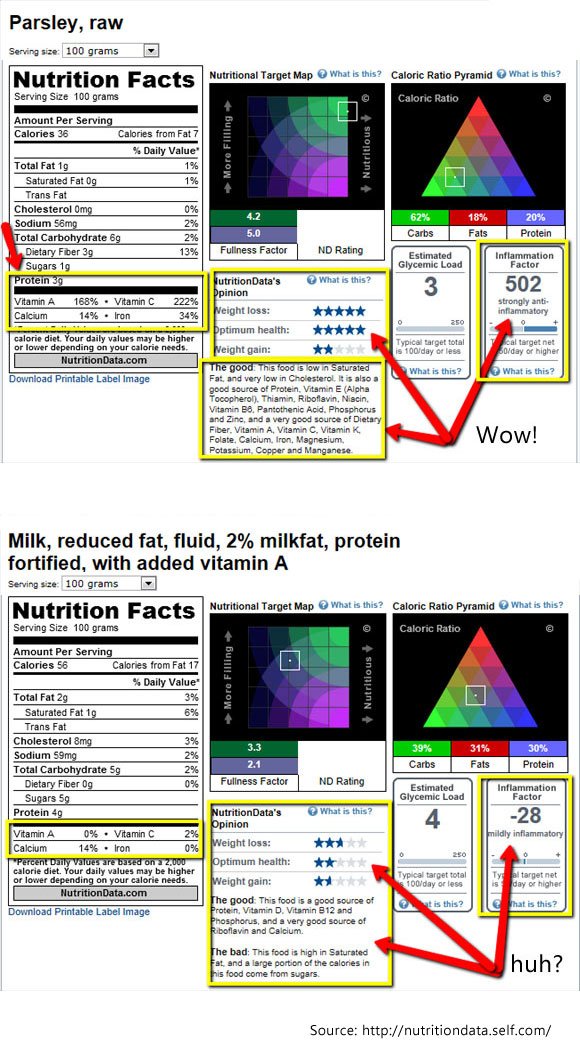
Or, if you must, have a glass of non dairy milk, such as soy milk.
Questions? Comments? Suggestions?
If you have a favorite recipe, why not submit it here in the comment section of this smoothie recipes blog for others to enjoy too!
I also welcome any comments, questions and suggestions. Thanks!
As a woman 47+ year old woman approaching menopause, I’m obviously concerned with strength of my bones and preventing osteoporosis.
Getting enough calcium and vitamin D is important for everybody, but especially critical growing children and for women in the first few years after menopause, when bone mass is lost more rapidly.
The recommended daily intake of calcium for an adult between the ages of 19 and 50 is 1,000 mg a day. (Adolescents, the elderly and pregnant women need varying amounts).
And what is the most often recommended source of calcium that we hear about in the media and from various health practitioners?
Dairy products. Cow’s milk, yogurt, cheese.
Well. I’m here to tell you today that dairy is nasty food.
You may be thinking “Huh, dairy… nasty? What is she talking about?! It’s so good for you. Without milk, where am I going to get my calcium?”
I hear you. I grew up on lots of dairy, too.
But think of the fact that the Chinese and Japanese, as well as many other peoples in the history of mankind, have never included milk or cheese in their diets. It’s only in the very recent past that dairy has been introduced as a daily food, and with it has come a fast increase in various health problems, such as obesity, breast cancer and also osteoporosis.
And that’s not surprising, because dairy products have been linked to a long list of health problems, including osteoporosis, heart disease, some types of cancer, and many childhood illnesses! If you are shocked to hear this, keep reading. This information can transform your health (and life).
The Bad: How Does Eating Dairy Jeopardize Human Health?
Calcium is used in balancing pH in the body. Our North American diet is full of acid-forming foods. The Standard American Diet (SAD) is loaded with meat, dairy, processed foods, coffee, table salt, sodas, white bread, and junk food – all of which force the body to secrete big amounts of digestive acid. Strong stomach acids are needed to break down animal foods like beef, chicken and pork. Calcium is required to neutralize strong stomach acids. Our blood can function only at a specific pH level and if the blood acid level moves up or down, calcium is secreted to alkalize strong digestive acids when they enter the bloodstream.
The body is designed for survival, so it sacrifices bone density to protect the kidneys and urinary tract because the latter are essential to survival. And the most readily available source of acid neutralizer is in the bones. So even though milk contains calcium, it ends up sapping your bones of that crucial mineral.
Many studies have demonstrated that over-consumption of animal protein has been identified to have the greatest impact on calcium depletion of the bones, even greater than the level of calcium intake through diet. Drinking more milk is not the answer, but increasing whole foods like green vegetables and reducing animal foods will plug the holes in the bucket, something our children are not being taught.
Our bodies are not meant to drink any milk except our own mother’s milk, and only when we are babies. The fact is that many people cannot drink milk from other animals. In the U.S. as many as 80% of African Americans, 90 percent of Asian Americans, and 60 percent of Hispanics are lactose-intolerant to some degree. And yet the message children hear all through school is to drink their milk for strong bones and teeth, and we want all school children to drink their milk – how crazy is that!
Some diseases associated with high dairy consumption include heart disease, osteoporosis, various cancer (including breast, ovarian and prostate cancer), as well as diabetes and asthma.
We look at nations where they drink milk, we find these diseases are common. We look at nations nations where the consumption of dairy is low, and they are rare.
The Ugly: How Are Cows on Dairy Farms Abused?
The dairy industry is, in a word, cruel.
The ugly fact that most people don’t want to know about is that cows on dairy farms are treated like milk-producing machines, which of course they aren’t – they are living, breeding and FEELING beings.
Cows produce milk for the same reason that humans do: to nourish their offspring. In order to force the animals to continue providing milk, factory farm operators impregnate every year them using artificial insemination. Their babies are torn away from them right after birth, when they are still very weak, while mothers cry for days and weeks because they miss their babies. Cows have been known to escape their farms and go searching for their offspring. These cows are genetically manipulated to produce about 10 times as much milk as they would naturally, spending their lives constantly bloated and in pain. They spend their entire lives being pregnant and producing huge amounts of milk.
Male calves are destined to be killed at very young age to become veal or beef and female calves destined to suffer the same fate as their mothers.
And cows on organic farms can suffer even more because when the animals’ udders become infected, farmers do not administer medicine, since that would not allow them to label the cows’ milk as organic.
An average cow on dairy farm lives for about 4-5 years, whereas under less stressful conditions, they would live for approximately 25 years! Stress and fear plague these cows on a daily basis, and it’s no wonder that at the end of their short lives, they are completely spent and often lame.
Even if you drink milk from cows that spend their day in pastures, you still contribute to unnecessary suffering of animals. Even small dairy farms repeatedly impregnate their cows using artificial insemination. Their babies are still torn away from them at birth, with male calves destined to become veal or beef and female calves destined to suffer the same fate as their mothers. 🙁
But, if I stop consuming dairy products, won’t that put me at greater risk for osteoporosis?
Animal-protein foods, such as meat, eggs, and dairy products, are highly acidic and produce poisonous byproducts when they are broken down so the body buffers the toxins with calcium before they are eliminated. This depletes calcium reserves in the body, including the bones, so the benefit of dietary intake of calcium from animal products is cancelled.
In countries where dairy products are not generally consumed, osteoporosis is much less common than in countries with high dairy consumption.
The Harvard Nurses’ Health Study followed 78,000 women for 12 years and found that milk did not protect them against bone fractures. In fact, those who drank three glasses of milk per day had more fractures than those who rarely drank milk. Visit PCRM.org for more information.
The Good: How Many Alternatives to Milk Are There?
If this is the first time you are hearing this information, it can come as a shock to you. By no means, you don’t have to believe me. Do your own research.
But be sure to check the source of the information, to check if there are no vested interests.
The good news is we don’t need dairy to be healthy, have strong teeth and bones and prevent osteoporosis!
When you first decide to cut milk from your diet, making the transition may seem daunting. I loved dairy products – especially yogurts and ice-creams – just as much as the next person. How could I live without milk? I thought that it would be impossible.
But once I opened my mind to the idea of change, I realized that many tasty and convenient alternatives are available. If you’re thinking about making a change, just go to your local grocery store and check it out! You can drink soy, almond, coconut, rice, oat, or hemp milk, to just name a few. Many of these alternatives even come in different flavors, such as sweetened, unsweetened, vanilla, or chocolate! There are so many options, and it’s fun to taste-test a few in order to determine which one you like best.
Plus, there are many more non-dairy, cruelty-free sources of calcium – check them out here.
Resources:
Health Concerns about Dairy Products: http://www.pcrm.org/search/?cid=252
Meet Your Meat: http://www.meat.org/
Mercy For Animals: http://www.mercyforanimals.org/
The Dairy Industry: http://www.peta.org/issues/animals-used-for-food/dairy-industry.aspx
Environmental Impact: http://michaelbluejay.com/veg/environment.html
Got Osteoporosis? Maybe all that milk you’ve been drinking is to blame.
Milk Myths
Questions? Comments? Suggestions?
If you have a favorite recipe, why not submit it here in the comment section of this smoothie recipes blog for others to enjoy too!
I also welcome any comments, questions and suggestions. Thanks!
Most people worry about not getting enough calcium. But should you worry about getting too much calcium? Can a person overdose on calcium?
Excessive levels of calcium in the blood lead to a condition known as hypercalcemia, which can have many causes, including calcium overdose.
The good news is, it’s highly unlikely that anyone would overdose on calcium from natural food sources. Therefore, in order to optimally need your calcium requirements, it’s best to consume lots of whole foods that are naturally rich in this mineral.
On the other hand, an overdose of calcium supplements, or other supplements such as vitamin D that increase calcium absorption in the body, can have serious side effects.
Generally, people should not be concerned about the toxicity of calcium or the effects of eating too many calcium-rich foods. Even if you ingest too much calcium your digestive tract will absorb most of it. The only side effects that may occur are constipation or bloating (which are extremely rare).
The acute symptoms of calcium overdose can cause nausea and vomiting, muscle weakness, diarrhea or constipation and drowsiness. Many people report that taking too much calcium can cause joint pain.
Excessive consumption of supplementary calcium leading to chronic high blood levels of calcium can increase the likelihood of kidney stones, kidney damage and failure, abnormal heart rhythms, calcification in areas of the body other than bone tissue, dementia and coma. Too much calcium can also interfere with iron absorption.
Ironically while many people ingest extra calcium supplements to improve their bone health, this can also block the uptake of manganese and that is actually bad for bone health.
Just another proof that natural is best, and one more reason to drink your calcium-rich green smoothies!
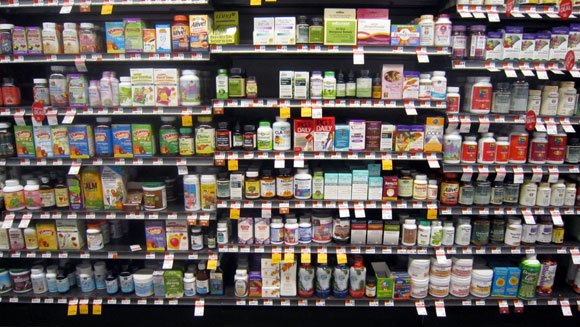
Hidden Dangers of Supplements
Questions? Comments? Suggestions?
If you have a favorite recipe, why not submit it here in the comment section of this smoothie recipes blog for others to enjoy too!
I also welcome any comments, questions and suggestions. Thanks!
Do you know the signs of a calcium deficiency?
Even if you are eating healthy diet, it’s important to know the calcium deficiency symptoms that may occur if the body is not absorbing enough calcium from the diet.
Calcium must be eaten daily and absorbed effectively in order to maintain optimal health. Most people can get enough calcium by eating a variety of foods rich in calcium. Healthy foods that naturally contain calcium green, leafy vegetables, nuts and seeds, sea vegetables, beans and whole grains. There are also many calcium-fortified foods available today, including orange juice, breakfast cereals, breads, and other. We can also take calcium supplements to help ensure we are meeting the recommended calcium requirements (which is anywhere from 1,000 mg. up to 1,500 mg. a day depending on age).
There some groups that require higher than usual intake of calcium. High dietary calcium intake is necessary for infants, children and adolescents for proper bone growth and formation. Pregnant women also have higher calcium needs for their developing babies. In addition, women who have reached menopause need to ensure an adequate amount of calcium intake to reduce the risk of osteoporosis. Calcium also helps to promote a regular heartbeat, helps our blood to clot properly, and helps to conduct nerve impulses correctly.
Women concerned about osteoporosis should be aware that supplemental calcium alone is not enough to solve the issue, if it’s related to heredity, lifestyle and diet, and is accelerated by hormonal changes at menopause. Another essential element is physical activity, especially weight-bearing aerobic exercise (walking, jogging or aerobics) and weight lifting, which should be part of everyone’s daily routine.
It’s also important to remember that because diet high in animal protein also cause bones to lose calcium, it’s recommended to limit or eliminate animal protein from your menu. For strong bodes (and better health) skip soda and caffeine, and quit smoking, all of which promote calcium loss in the urine.
4 Signs of Calcium Deficiency
If you have a calcium deficiency, you may experience any of the following signs:
Muscle cramping, usually occurring at night, especially in the legs.
Dry Skin and Brittle Nails. When your skin becomes dry and your fingernails become brittle (break easily), you could be lacking from calcium. If these symptoms are present, you may also want to check to see if your teeth are becoming yellow. The teeth and the bones can be severely affected from a lack of calcium.
More Severe PMS Symptoms. A woman may begin experience more intense cramping or increase in her menstrual flow.
Bone Fractures or Breakage. Since calcium is needed to build bones and to keep them strong, without sufficient supplies of calcium, our bones will become weak. As they weaken, fractures and breakage can occur. This is a severe symptom of calcium deficiency.
What to Do If You Suffer From Calcium Deficiency
If you are experiencing any of the above signs, you will need to evaluate how much calcium you are consuming each day. You may need to add more calcium enriched foods into your diet, and consider the possibility of adding a calcium supplement, as well. You can get adequate amounts from your diet if you eat a lot of cooked greens (collards have most), molasses, sesame seeds, broccoli, and tofu (be sure to read package labels to make sure calcium was used in its preparation), as well as calcium-fortified soy milk, and orange juice.
If your symptoms are severe, see your doctor, who may want to do some blood work or other tests.

Hidden Dangers of Supplements
Questions? Comments? Suggestions?
If you have a favorite recipe, why not submit it here in the comment section of this smoothie recipes blog for others to enjoy too!
I also welcome any comments, questions and suggestions. Thanks!
Plant based diet has been gaining popularity recently. There is no surprise there. In fact, it’s a type of eating that millions of people around the world have been following for centuries, and the science is finally catching up. Today, and there are many physicians in the U.S. that recommend this way of eating for optimal health, weight and well-being.
If you want more information from a licensed physician, I highly recommend that you read books by Dr. Joel Fuhrman. Books by T.C. Campbell, Dr. Esselstyn, Dr. Neal Barnard, and many others also promote this lifestyle.
In an interview on CNN where two prominent doctors, Dr. Ornish and Dr. Esselstyn, explained healthy way for Bill Clinton’s dramatic weight loss and improved health.
http://youtu.be/UoHt9cSWJVI
Unfortunately the video is not available right now. Also read an excerpt from an interview with Dr. Esselstyn, one of the world’s leaders in heart attack prevention that I published here. Think about what he had to say about how disease develops and how it can be prevented.
Questions? Comments? Suggestions?
If you have a favorite recipe, why not submit it here in the comment section of this smoothie recipes blog for others to enjoy too!
I also welcome any comments, questions and suggestions. Thanks!






